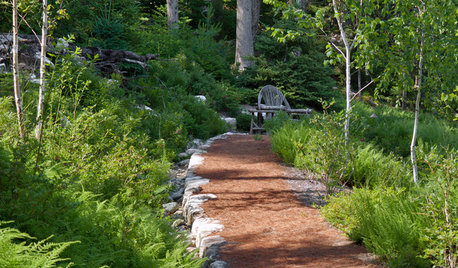Best plan for a weed-free garden? Weed cloth and mulch?
aftermidnight1
17 years ago
Featured Answer
Sort by:Oldest
Comments (13)
Kimmsr
17 years agoamateur_expert
17 years agoRelated Professionals
Bridgetown Landscape Architects & Landscape Designers · Birmingham Landscape Architects & Landscape Designers · Marco Island Landscape Architects & Landscape Designers · Waunakee Landscape Architects & Landscape Designers · Brooklyn Park Landscape Contractors · Centereach Landscape Contractors · Coeur d'Alene Landscape Contractors · College Park Landscape Contractors · East Patchogue Landscape Contractors · Kerman Landscape Contractors · Live Oak Landscape Contractors · Smyrna Landscape Contractors · Green Bay Decks, Patios & Outdoor Enclosures · Owings Mills Decks, Patios & Outdoor Enclosures · Prescott Decks, Patios & Outdoor Enclosurespablo_nh
17 years agodavid52 Zone 6
17 years agoaftermidnight1
17 years agopablo_nh
17 years agoKimmsr
17 years agoaftermidnight1
17 years agoplantcompost
17 years agogardenlen
17 years agocchanderson_gmail_com
13 years agogt211thmp_yahoo_com
13 years ago
Related Stories

GARDENING GUIDES5 Things to Know About Weeding and Mulching Your Native Garden
What’s the best time to pull weeds? How thick should the mulch be? Here’s the scoop for a healthy landscape
Full Story
EDIBLE GARDENSNatural Ways to Get Rid of Weeds in Your Garden
Use these techniques to help prevent the spread of weeds and to learn about your soil
Full Story
GARDENING GUIDES5 Ways to Naturally Win the Weed War
Show irksome weeds no mercy with these tricks for combating them sans chemicals
Full Story
GARDENING GUIDESTackle Weeds the Natural Way
Instead of dousing your yard with chemicals to wipe out weeds, let time and nature work their magic via smothering and solarization
Full Story
GARDENING GUIDESLet's Weed Out 4 Native Plant Myths
Plant wisely for a garden that supports pollinators and requires less work
Full Story
HOUZZ TOURSHouzz Tour: From Overgrown Weeds to Picturesque Farmhouse Expanse
This once-neglected 100-acre South Carolina site now features a lake, a wood-filled farmhouse and a far-reaching view
Full Story
GARDENING GUIDESHow to Pick a Mulch — and Why Your Soil Wants It
There's more to topdressing than shredded wood. Learn about mulch types, costs and design considerations here
Full Story
GARDENING GUIDESThe Art of Green Mulch
You can design a natural garden that doesn’t rely on covering your soil with wood and bark mulch
Full Story
GARDENING GUIDESNew Ways to Think About All That Mulch in the Garden
Before you go making a mountain out of a mulch hill, learn the facts about what your plants and soil really want
Full Story
GROUND COVERSGround Force: 10 Top Ground Covers for Your Garden
Protect your soil from weeds and drought this summer with a living mulch of ground covers
Full StoryMore Discussions







joepyeweed